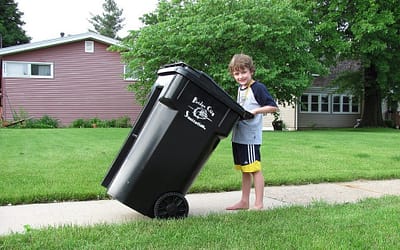Spending more time in our homes has made us and the planet witness a unique era that is still difficult for us to grasp
We are part of a special moment in our evolution. However, we are not the only ones, our planet is too (spoiler alert).
Don’t let the tree cover the forest
Without diving into the economic impact, for a few months, ecosystems were able to breathe more easily due to less human activity in the different cities over the planet. Factories slowed down, businesses closed and ecosystems… saw the light of day again.
We have all probably seen the videos of wild animals enjoying the tranquility of completely empty cities: schools of fish returning to cover the canals of Venice, wild boars running loose in the streets of Haifa, Israel; and even pumas wandering around Santiago, Chile.
Have you seen it?
Somehow, in recent times, the volume of the planet’s voice asking to be heard has increased. A planet in which the average temperature is rising exponentially, and that slowly, like an egg in boiling water, is cooking.

A report by the IPCC (Intergovernmental Panel on Climate Change) provides a graph that allows us to measure this evolution. Today, the global average temperature is more than 1°C warmer than in the pre-industrial era (before 1850), with an increase of approximately 0.2°C per decade.
We are living in a planet with increasingly extreme climatic conditions, that will have consequences we can’t even begin to imagine.
Beware: this is not an imaginary Netflix series
Let’s recap a bit. Already in decades before the pandemic, global temperature rise was a reality. Today we are facing the hottest period since records have been kept. This was not caused by natural phenomena. Surprise: who is responsible? We, humans, of course.
After decades of unmeasured exploitation of natural resources, high use of fossil fuels and deforestation, the concentration of Greenhouse Gases (GHG) increased considerably.
These gases absorb radiation that would otherwise return to space and retain heat in the atmosphere. Without this natural occurrence, the average temperature of our planet would be about -18ºC. So we guess we should thank GHGs for existing.
Now, with many GHGs emitted into the atmosphere, the global temperature is rising higher and higher, like a heater turned on endlessly.
The world is already suffering the consequences of climate change
The effects? Warming and acidification of the oceans, rising sea levels, bleaching of entire coral reefs, melting of ice and glaciers, hotter and hotter summers, more intense storms and hurricanes, droughts that deepen the food crisis… And the list could go on. The results are visible, but could they be worse? Believe us, they could. It’s not a Netflix series.
The good news: we have us
We have the magic wand to turn this situation around. And that is to get ahead of the scoreboard. For that, we need to make decisions that aim the same goals. According to the IPCC, a first step would be to halve fossil fuel emissions by 2030.
This implies rethinking our economies. Moving from a production matrix dependent on fossil fuels such as oil, coal and gas, to one dependent on clean energies to be implemented worldwide. This entails drawbacks such as, for example, the use of nuclear energy; but, that will be another post’s issue. Countries must adopt new measures and not be tempted to refinance new fossil fuel projects. Just watch these examples from CNN’s “The one chance we have” to know what we are talking about.
But what can we do from our personal place? Is there any point in reducing our carbon footprint if the great powers or more than 7 billion people don´t do it? Actually, yes, it does, and more than we imagine.
Here are some small steps you can take in your life to help reduce your carbon footprint. Whether you’re at the office, at home, on the road, at school or on vacation, it all counts.
Change your diet
If you’re a meat fanatic and can’t stop eating those burgers, you’re not going to like this fact.
An estimated 14.5% of all greenhouse gases are attributed to livestock, according to the Food and Agriculture Organization of the United Nations.
So… eating less meat would definitely be a smart choice. Bonus track: waste less food and buy local! That way, you will avoid unnecessary transportation and thus, unnecessary emissions.
Also, check out what is doing the Instock restaurant in Amsterdam, the Netherlands.
Less car, more bike
Not using a car can mean a decrease of almost 2.4 tons of CO2 equivalent per person per year, according to a study by international researchers (Seth Wynes and Kimberly A Nicholas 2017 Environ. Res. Lett. 12).
Another research (Diana Ivanova et al 2020 Environ. Res. Lett. 15) suggests that avoiding driving is the most effective routine option for reducing your carbon footprint (see table below).
So, using your bike or, at least, using public transportation can have a greater impact than you think. If you do drive, try to accelerate more slowly, don’t abuse the air conditioning and check your tire pressure.
This will help you to produce fewer emissions from your car. And if you’re thinking about a new car, think electric.
Find more details in our article on how to be mobile sustainable
Avoid air travel
Yes, we know. How can you possibly go on vacation without a plane? Well, nowadays it seems a bit unlikely due to restrictions.
But maybe in the future you can try visiting closer tourist areas that you don’t know. Air travel is one of the biggest sources of emissions.
You can calculate your footprint per flight here. If your job requires it or there is no other option, then try to mitigate your footprint with projects that stimulate CO2 capture.
For example, financing forestation projects can be a good idea.
Home, sweet and efficient home
Nothing better than starting at home. The first thing you can do is to choose an energy supplier from renewable enavoid air conditioning and use a fan to cool down.
Also, try to use the least amount of water (and the cooler tergies. You could even install solar panels if your home allows it.
Make sure to use LED lamps, insulate your windows and doors well to maintain the temperature, he better) and dry your clothes in the sun without using a dryer.
Finally, unplug all electronics that are not in use. Devices that are left plugged in even when not in use consume energy. This will help your pocket too, you’re welcome.
Avoid plastics. Reuse
You can use cloth bags instead of plastic bags to do your shopping and carry your food.
If you don’t have one, ask for a reusable cardboard box, don’t be ashamed. More and more of us are already doing this.
The best waste is the one that is not generated, so avoid mass consumption.
As a last resort, recycle correctly all your waste with the corresponding indications (dry, wet and even electronic waste).
Keep an eye on your emails
How do you imagine the Internet? Did you know that the famous “cloud” is not magically in the air, but is made up of huge, physically concrete data centers distributed all over the world? And that, all these centers use a lot of electricity to operate and store information?
So, as users we can also take certain steps to reduce our digital carbon footprint:
-
- delete those emails that are no longer useful
- sort the files you have stored in cloud storage
- optimize your searches to avoid multiple options that consume more energy
- use Internet search engines such as Ecosia (plant trees) or Gexsi (support social and environmental projects)
- discover more in our article The internet needs to go on a diet
Do you want everything in a graphic table? Here are 10 options and how many tons of CO2 you would save in each case per year, according to the international research by Diana Ivanova et al 2020 Environ. Res. Lett. 15.
According to this study, by adopting the 10 graphed options you can reduce your emissions by up to 9.2 tons of CO2 equivalent per year. If you want to calculate your overall carbon footprint, you can do so at https://www.footprintcalculator.org/ or at https://www.carbonfootprint.com/.
Now that you know, take action and create more environmental awareness!
Can you imagine the effect of these habit changes in your home, your neighbourhood, your city… of those of us who are part of the Komoneed community?






0 Comments